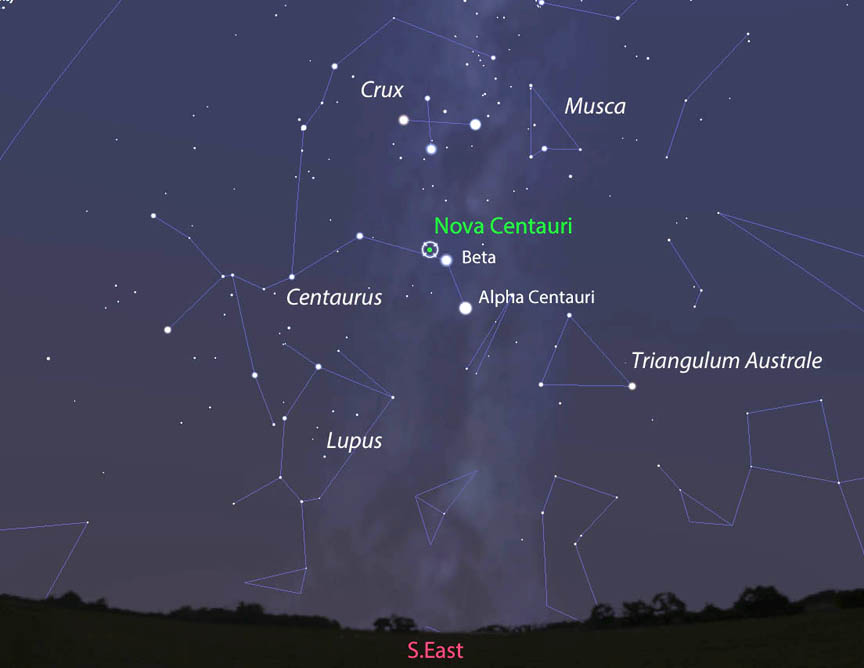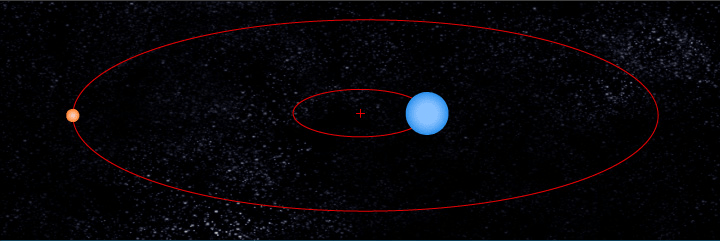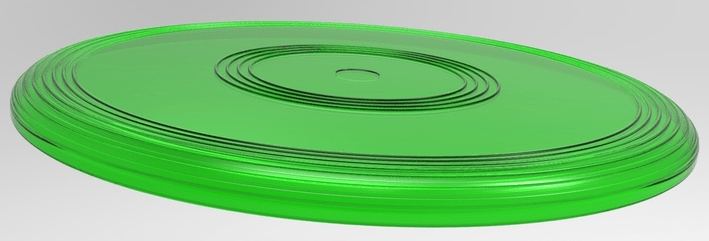
We know how big stars are; they range from the size of the Earth to over a thousand times the size of the sun (which is in itself over one hundred times the size of the Earth). We know they’re huge.
But how massive are they?
Yes, that’s a different thing.
A pingpong ball and a golf ball are close to the same size, but a golf ball is much more massive—in that it has more stuff in it. A pingpong ball is hollow and easily tossed; a golf ball has more matter in it and will hit the ground with a harder thunk.
Stars are similar. They have a wide range of sizes, but nothing I’ve described thus far has told us about their masses. That is, how much stuff is in them? Are they like puffy gaseous balls, or are they more dense, like planets?
The best way to learn about stars’ masses is by studying binary stars. But what exactly are binary stars?

Find yourself a clear, dark night far from city lights, and you might just be able to make out a double star visible to the naked eye. It’s in the asterism known as the Big Dipper, within the constellation Ursa Major.
You can find Ursa Major by looking north. Note where the sun set that evening and rose that morning. The sun sets roughly in the west and rises roughly in the east. You’ll have to make a closer study of the seasons to get it exact, but you can get close this way.
Now imagine a compass rose. You know where west and east are, so you know where north is, right?
Look up into the sky. If you’re near the equator, look near the horizon. If you’re up in Canada, northern Russia, or some other northern region, you’ll have to look near the zenith (the point in the sky directly above you).
If you’re more in the middle, like me—32°, more or less—look sort of in the middle of the sky. And you’ll see it.
The Big Dipper is often mistaken for a constellation, but it’s just a familiar grouping of stars. Constellations are officially registered and used by astronomers to map the sky; the Big Dipper is part of the constellation Ursa Major.
But that doesn’t matter right now. See it arching overhead? The second star from the end of its handle is Mizar. And if you have good eyes, you should just barely be able to make out a second one. That’s Alcor.
Mizar and Alcor are in orbit of one another, just as Earth orbits the sun.
Well…it’s a little different. But we’ll get into that later.
For those of you in South America, Africa, Australia, or elsewhere in the southern hemisphere…here’s a binary star for your viewing pleasure.

You southerners are lucky, because you have a particular binary star in your sky that I have yet to see from up here in the United States…and it just happens to also be the nearest star system to Earth.
See the star labeled “Alpha Centauri” in the constellation Centaurus? That’s the brighter star. Look closely with a pair of binoculars and you should be able to see that it’s actually two separate stars—Alpha Centauri A and Alpha Centauri B.
Astronomers didn’t just mess up, giving them the same name. They’re named the same because they’re a binary star system. They orbit one another, and they’re nearly indistinguishable in the night sky.
So…why again are binary stars so important in figuring out the masses of stars?
Well…it’s because binary stars give us one key to mass that single stars don’t: gravity.
Think about it. It’s amazing how much we can learn about stars just from their apparent magnitude and their spectrum, two pieces of data that are important in discovering their luminosity, size, and star type. But none of this tells us their mass.
Mass has nothing to do with size. Maybe supergiant stars have only the mass of a white dwarf, but are really light and billowy. And for that matter, how much mass is in a white dwarf? That would be a comparison, not an actual measure of mass.
But if there’s one thing mass has a dramatic effect on, dramatic enough for us to observe and measure, it’s gravity. That’s practically a law of the universe. It’s how gravity works. The bigger you are, the stronger your gravity.
Why do you think the sun can hold onto all eight planets in our solar system, plus numerous asteroids, dwarf planets, Kuiper belt and Oort Cloud objects, and countless comets and man-made satellites? Because it actually accounts for most of the mass of the solar system.
Anyway. Back to binary stars. If we observe their orbits, we can figure out the masses of the individual stars.

What the heck is going on in this image?
I briefly covered the concept of a center of mass in my post on how orbits work, but let’s examine it in more detail here.
Here you have two stars of different masses. Now let’s imagine for a moment that it’s actually a planet orbiting a star—like what happens in our own solar system.

This diagram assumes that our planet is not only pretty large—say, Jupiter-sized—but also pretty close…say, Mercury-distance. That may be a weird idea in our solar system, but the majority of the extrasolar planets we’ve found are actually like that.
Anyway, the star has mass, and it tugs the planet toward it. The planet is in free-fall toward the star. But it won’t crash into the star, because it has a sideways velocity too.
It’s like…imagine if you’re in a plane, and you’re trying to get from California to Iowa, but there’s a cross wind pushing you towards Montana?
The planet is trying to head to Iowa. But its star is in Montana, and gravity exerts the force of our cross-wind. So the planet doesn’t actually get to Iowa, but it doesn’t get to Montana either—it ends up in a circular path around the star.
Here’s the thing, though. States may not move, but stars do. Because don’t forget, the planet has mass too. And that means it has gravity.
Now, it won’t be able to tug the star completely off course, like the star could. But if it’s big enough and close enough to exert a strong gravitational force, it will make the star wobble around a bit in space—like you see in the diagram above.
Notice how the star has its own orbit around a particular point of space? That point isn’t random. It’s the system’s center of mass.
So how does a center of mass work, exactly? Well, let’s take a look at our star-plus-planet diagram again, but now let’s add something…

Think of an orbital system as a bit like a teeter-totter, or a sea-saw, or whatever you want to call it. Have you ever tried to play on a teeter totter with a little kid? And if so, were you disappointed when you plonked straight to the ground?
Well, teeter-totters don’t really work when one side carries so much more weight than the other. They need balance. But you will find that if scoot really close to the fulcrum (that’s the teeter-totter’s balance point) and the kid scoots away, you can balance it.
Okay, so you’ll probably need an absurdly long teeter-totter for that to work…like the one above. But the concept is the same.
Now…do you notice that the person above, the fulcrum, and the cat line up exactly with the placement of the star, the center of mass, and the planet?
Exactly.
Let’s take a look again at a binary star.

The mechanics of the orbits are the same as with planets…or with a teeter-totter.
Now, finding the masses of the individual stars isn’t as simple as all that. We have to measure the distance to that star so that we can translate distance in our telescope to actual distance across space.
Also, part of calculating the stars’ masses has to do with the shape of their orbits, and they might be at a weird angle to us while we have no idea. I mean…we know a frisbee is actually a perfect circle, right?

Coulda fooled me.
What if a binary star system had orbits that looked like that…when really they were more frisbee-shaped and we were just seeing them at an angle?
There are problems with calculating stellar masses. But, heck, there were problems with figuring out the size of the Earth just centuries ago, and now we know the rough size of the observable universe. I’d say we’re on the right track.
And astronomers are always coming up with new ways to correct for the tricks the galaxy likes to play on our observations…so we can get more and more accurate measurements as time goes on.
As it is…I think that’s plenty on binary stars for now. Next up, let’s dive into some different types of binary systems.